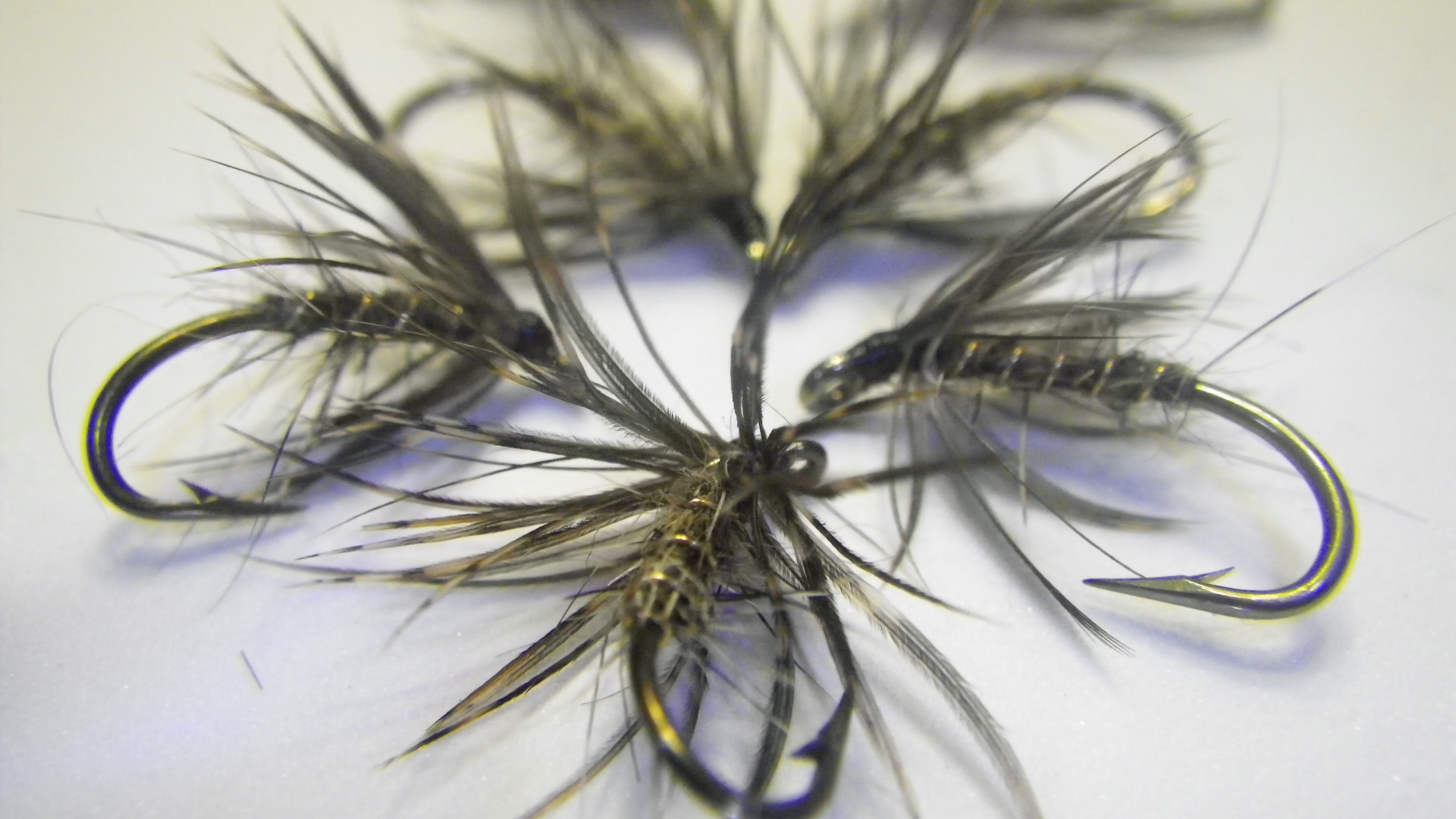Effective Fly Patterns For Late Winter/Early Spring
Wet Flies are my top choice for early season panfish.
Late winter/early spring can be a frustrating time for the panfish fly rodder. Bluegills and other sunfish are starting to make more frequent forays into shallow water, but cooler water temperatures reduce their need for food and keep them sluggish. To consistently catch fish this time of year you need to fish slow, and you need to fish deep. While panfish anglers in the south may be enjoying the first quality topwater fishing of the year, those of us north of the Mason-Dixon line need to look for our fish below the surface. The only exception to that rule may be if you are lucky enough to be on the water during a good midge hatch. Midges are a given any time there is open water, and I have seen fish rise to them in some pretty cold conditions. The main reason we don't enjoy top water fishing during this time of year is there is just nothing for the fish to eat on the surface of the water. Terrestrial insects have not yet risen from their winter slumber, and the majority of aquatic insects are still quite content with their marine setting.
So for the majority of my early season fishing, success means fishing below the surface. My selection for this time of year includes nymphs, small streamers, wet flies and soft hackles. I am likely to fish wet flies and soft hackles more than any other patterns, but the others have their place.
Soft hackles are deadly on early season panfish.
Wet Flies and Soft Hackles
The key to fishing these patterns is to fish them S…L…O…W… and in many cases deep. While the fish will typically be found deeper during this time of year, they do occasionally move surprisingly shallow. I have seen panfish in water only inches on a warm, calm day during this time of year. When this occurs, the fish are likely to be extremely skittish. If there are active midges on the water a small soft hackle fished just beneath the surface can be deadly, otherwise you need to go down to get fish.
I have said in the past that you can do 99% of your fishing with a floating fly line. Late winter/early spring is one of those times where sinking lines may be of a benefit to get your wet flies to where the fish are. I prefer to fish unweighted wet flies as they allow me to fish the patterns slowly without fouling on the bottom. Intermediate or sinking lines will enable me to get those unweighted flies down to the fish.
I tend to lean towards darker more natural looking wet flies in the early season, switching over to the brighter more gaudy stuff once the water warms a bit and the fish get a little more active. I keep things on the small side fishing flies in sizes 12-16. One of my favorites is a pheasant tail soft hackle with a fluorescent orange thread head. I know I said “natural looking” but a little bling can’t hurt.
Are you interested in trying wet flies for panfish? Check out our Early season Soft Hackle Selection.
A small buggy Hares Ear Nymph is a great choice!
Nymphs
Nymphs can be very useful especially those colder days. Once again, those flies must get down to the fish. My preferred way to finish nymphs this time of the year is to use a weighted pattern suspended under a small indicator. Using a weighted or bead head nymph allows me to fish without adding additional weight to the line. The nymph will sink to the depth you have the indicator set. To get down deeper than five or six feet I will often rig my indicator to act as a small slip float. Casting an indicator set up can get unwieldy when a fly is suspended greater than six feet. The benefit of this style of fishing is that you can keep the fly in front of the fish for more extended periods. Sometimes that is needed to entice sluggish fish in cold water. Once again I keep things on the small side using nymphs ranging from a size 12 down to an 18 if there are midges active.
A scaled down Wooly Bugger is a great option if you want to fish a streamer.
Streamers
Small streamers can produce fish as well as long as you fish them slowly. I have found that most panfish are not willing to chase down a meal in water temps colder than 50 degrees. With the exception being crappies, but even they can be a little slow in cold water. A micro bugger in size 10 or 12 is a favorite for this time of year as well as small bucktails. Don’t be surprised if these small streamers attract the attention of larger predators looking for an easy meal!



